Superset workouts are one of the most popular and well-known weight training techniques that can help you build more muscle in less time. You can cut your workout length easily by a third, or even in half using supersets and still gain the same amount of muscle as traditional training. It might sound too good to be true, but at least two dozen studies have proven it.
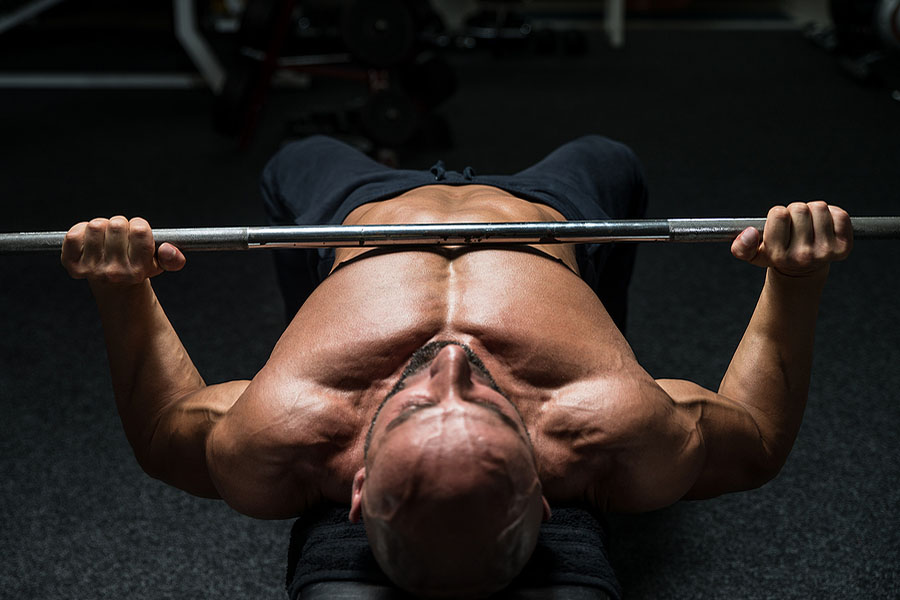
Supersets are popular. But what most people don’t know is that there are at least a half a dozen types of supersets. Every superset variation is time-efficient and will build muscle. However, one type stands above the rest for getting in short workouts without compromising your strength gains. (It’s #1 on the list below).
Before I show you each type of superset, let’s start by answering the most basic question…
What Is A Superset?
Superset definition: A superset is a resistance training technique where you do two exercises in a row, with little or no rest in between. You take a normal rest interval after the second exercise, which is usually one to two minutes. After the short break, you repeat the two-exercise sequence, usually for a total of three supersets.
Because you are cutting out the rest period in between the two exercises, that’s where the time savings come from. Depending on the exercises you choose, you might be able to move immediately to the second exercise (almost zero rest). Or, if you have to move to another machine or grab a difference piece of equipment, there might be 5 or 10 seconds in between the two exercises.
Either way, the rest in between the two exercises is minimal. That’s what defines a superset. To accomplish this, it’s important to have the equipment for your second exercise ready before you start. This can be a problem in a crowded gym, but there’s a solution, which I explain in #6 on the list below.
Make a note that this is not circuit training where you do a long series of exercises nonstop. Supersetting means going back and forth between two exercises. This is why exercise scientists sometimes call it “paired set training.”
For general fitness, health, and fat loss, I think circuit training is a great tool for busy people. But for gaining muscle size, it’s totally inferior. Supersets are a far better technique if you want to build real muscle.
Supersets Versus Traditional Sets
Anyone can use supersets if they choose, but the biggest benefit is time efficiency. That means the people best suited to use this method are busy people with limited time to work out. People with no time restrictions could simply stick with straight sets. Also, straight sets are arguably still the best way to go when your goal is maximum strength.
Let me make this clear so it doesn’t sound like I’m overhyping this technique: The research doesn’t say that supersets are necessarily better than regular sets, but it does confirm that supersets win for time efficiency. We’re talking about the same muscle gains with much shorter workouts. At the same time, supersets make your workout more engaging, faster-paced, even fun.
The superset method can seem confusing at first, unless you have a trainer teach it to you in person or on video. So before I show you the 6 types of supersets, let me first give you an example of what the sequence looks like, compared to traditional straight sets:
- Traditional (Straight Set) Training:
Barbell Bench Press set 1
Rest 1 – 2 minutes
Barbell Bench press set 2
Rest 1 – 2 minutes
Barbell Bench press set 3
Rest 1 – 2 minutes
Move on to next exercise
Barbell Bent Over Row set 1
Rest 1 – 2 minutes
Barbell Bent Over Row set 2
Rest 1 – 2 minutes
Barbell Bent Over Row set 3
Rest 1 – 2 minutesMove on to next exercise
- Superset Training (Antagonist Method):
Now here is superset training:
Barbell Bench press set 1
Little or no rest
Barbell Row set 1
Rest 1 – 2 minutes
Barbell Bench press set 2
Little or no rest
Barbell Row set 2
Rest 1 – 2 minutes
Barbell Bench press set 3
Little or no rest
Barbell Row set 3
Rest 1 – 2 minutes
Move on to the next exercise or superset pair.
There are at least a half a dozen types of supersets, and I could argue there are even more if we get into sub-categories and nuances.
The most well-known type of superset is the antagonist pairing, so let’s start there.
#1 Antagonist supersets
The most popular, and arguably most effective type of superset is the antagonistic superset. This is also called a reciprocal, or opposite muscle superset. As the name implies, you do two exercises in a row for opposing muscles.
Here are three of the most common body part pairings:
1. Chest and back
2. Biceps and triceps
3. Quadriceps and hamstrings
And here are 3 antagonist superset exercise examples:
1. Bicep curl supersetted to tricep extension
2. Chest press supersetted to row
3. Leg extension supersetted to leg curls
Antagonist supersets are not only the most popular, they’re also the most researched. One of the reasons they’re so effective is because when you train opposite muscles, back to back, there is no “interference.”
For example, in the arm superset, when the biceps are working, the opposite muscle, the triceps, are resting, and vice versa. If you did two bicep exercises in a row, a same muscle superset (see #2 below), your biceps will be fatigued after the first exercise, and you’ll have to use less weight than you normally would on the second.
In addition, research has shown that after training one muscle, if you immediately train the antagonist, that second muscle in the two exercise pair contracts harder, and this might even lead to greater muscle growth than you’d get in a traditional set.
#2 Same Muscle Supersets
A same muscle group superset is exactly what the name implies: two different exercises for the same muscle, done back to back in a pair.
Here are 3 examples of same muscle supersets, and the subcategory they fall under:
1. Barbell curl supersetted to dumbbell curl (isolation superset)
2. Shoulder press supersetted to lateral raise (post exhaust superset)
3. Squat supersetted to lunge (compound superset)
A little-known sub-variation is the mechanical advantage superset. In this case you choose a stricter or harder exercise first, then superset it to an easier variation of a similar exercise. An example is supersetting incline dumbbell curls with standing dumbbell curls.
Same muscle supersets are used for bodybuilding and physique training because it pushes a single muscle to total fatigue, increases metabolic stress, and forces a lot of blood into one area, creating a huge pump.
The downside is that due to the fatigue, you can’t use as much weight as usual on the second exercise, so this type of superset is considered less effective for strength goals compared to antagonist supersets.
#3 Pre-Exhaust Supersets
Pre-exhaustion is where you superset two exercises for the same muscle group but not only that, you do a single joint (isolation) exercise first and then a multi-joint (compound) exercise second.
Here are a several examples of pre-exhaust supersets:
1. Superset leg extension to leg press
2. Superset flyes to bench press
3. Superset lateral raise to overhead press
4. Superset straight arm pulldown to rows
5. Superset leg curl to Romanian deadlift
The pre-exhaust method was widely promoted since the 1960s and 1970s, including by Muscle Mag International publisher Robert Kennedy and Arthur Jones of Nautilus equipment fame. Many authorities claimed that pre-exhaust was a superior technique. It certainly builds muscle and has advantages, but it also has downsides.
Simple observation will show you that pre-exhaust is inferior for strength gains on the compound exercise. If you do leg extensions first and then leg press right after with no rest, you’re not going to be able to leg press as much. It’s common sense.
However, some of the newest research (Keskin et al, 2024) also suggests that muscle gains may be equal to what you can achieve with straight sets, under one condition: your volume load is the same. In fact studies also show that if you do superset workouts in a way that you do more volume in less time, that can increase muscle gains compared to straight sets.
As long as you keep up your training volume and also use progressive overload over time, can will continue making great muscle gains with supersets, even with the lighter weights.
Using a method (same muscle supersets) that forces you to use less weight may be a downside. However, there’s actually a major upside. Not only are all types of supersets time efficient, but also, pre-exhaustion allows you to make muscle gains with lighter weights on the compound exercise. This can be helpful if you’re recovering from an injury or working around joint pain.
For example, consider the flyes to bench press pre-exhaust superset. If you want to gain maximum strength and bench press as much as you can, you would not want to pre-exhaust. You would do straight sets with about 2 or 3 minutes rest in between sets.
But what if you had injured your shoulder or pec and didn’t want to risk aggravating that area? Some people would just stop benching and that might be wise. But others might be able to keep benching in a pre-exhaust superset because they wouldn’t have to use as much weight, thus reducing the injury risk.
So you can now see how pre-exhaust and other same muscle supersets, while sometimes are criticized, are one of the techniques you can use to “make a light weight feel heavier.” That can be a useful thing. (Just ask age 40 and 50+ lifters with joint pain, and they’ll agree).
#4 Staggered Supersets
Staggered sets are a weight training tactic that became popular in the 1960s and 1970s “Golden Era” thanks to the influence of Arnold Schwarzenegger. Arnold used this method to bring his calves from his weakest muscle to one of his best developed.
The technique is used mostly for small muscles like calves and abs. Here’s how you do it: You simply insert a set for these smaller muscles in between sets for the other, larger muscle groups where the rest interval used to be.
For example, you do a set bench presses for chest and instead of sitting on a bench scrolling Instagram for a couple minutes before doing the next set of bench presses, you use that time to do a set of calf raises.
If you’re doing three sets of bench presses, that’s three sets of calf raises you can squeeze in between. If you’re doing two chest exercises, you can do three more sets of another calf exercise. That’s six sets of extra calf work. But it didn’t take you any longer than usual, and it didn’t interfere with your benching because the calves are a small and unrelated muscle.
When you superset two exercises that are both for large muscle groups and are metabolically demanding, it’s so physically draining that your performance in the second exercise may drop. Then with each subsequent set, fatigue keeps building up and you’re tired and weaker by the final sets and you can’t use as much weight or do as many reps.
That drop in performance doesn’t happen with staggered sets because small muscle groups like calf raises don’t demand much energy and don’t interfere with doing exercises for unrelated muscles such as the bench press.
That’s another major difference between staggered sets and other types of supersets: staggered sets usually involve supersetting exercises for a large muscle group with a smaller and completely unrelated muscle. The large muscle has time to rest while you’re training the small muscle, so when you go back for another set of the big exercise you can work it will full strength and energy.
You could get creative and brainstorm other ways to use this technique as well. For example, you could do a set of biceps in between sets of chest or shoulders. What you must avoid is pairing up exercises that strongly interfere with each other. You would not want to train triceps in between sets of chest or shoulders because the tricep fatigue would substantially hurt your performance in the chest or shoulder work.
#5 Upper-Lower Supersets
Upper – lower supersets are lesser known than supersets like antagonist pairs or pre-exhaust. As the name implies, this is where you pair up a lower body exercise with an upper body exercise. This technique can be used when you are on a full body training schedule.
If you’re training your whole body in one session, you could do any type of superset workout, such as bicep curls to tricep extensions, chest presses to rows, leg curls to leg extensions and so on. The upper-lower superset provides another option that can help keep your training interesting.
The supersets are mostly non-interfering because you’re training completely different parts of your body so there is no residual fatigue in the muscle groups trained from the previous exercise. For example, researchers from the University of Murcia in Spain (Garcia-Orea et al, 2022) found that supersetting bench presses and squats produced no decrement in performance, but the workout was done much faster.
Here are a few more examples of upper-lower superset workouts:
1. Superset Romanian deadlifts with shoulder presses
2. Superset leg press and pullups
3. Superset leg curl to tricep extension
While researchers have found that the upper-lower combination can be an efficient and effective superset workout, there is a potential for interference. If you were to superset the barbell squat and the bent over row, that would be two compound (multi-joint), big muscle exercises that put great demand not only on your muscles, but also on your cardio.
That means you might feel so fatigued after the squats that your performance suffers on the bent over rows. In this instance another potential issue is that squats can cause low back fatigue, and then when you get to the bent over rows, your low back could be a limiting factor, and there could even be increased risk of injury.
This is true for other types of supersets as well, especially when you put two compound exercises together (like squats and Romanian deadlifts). Some people consider this kind of metabolic stress a positive if they’re training for conditioning and fat loss, but when the primary goal is strength and muscle mass, the effect can be negative.
So you do have to choose superset pairs thoughtfully and consider whether different types of fatigue could lower your performance, amount of weight you can use, or volume load.
#6 Turbo Supersets
What is a Turbo superset? Good question. This is a type of superset I invented and named. You won’t see “Turbo superset” mentioned in the studies – it’s a program name, not a scientific term.
However, my Turbo superset system is based mostly on antagonist supersets, which as you learned earlier, is the most popular type, and also the most effective for maintaining strength gains, compared to straight sets.
I created this method after I’d been teaching my clients and readers how to do superset training for years, and I kept hearing the same complaint:
“Tom, I train in a gym during peak hours in the early evening. The problem is, it’s impossible to use two different machines or pieces of equipment because if I walk away from the first one to do the second exercise, someone else takes the machine. I could leave my towel and water bottle on the machine, but I know that’s bad etiquette.”
It’s a legitimate complaint. But there is a solution. For gym training, even when the gym is crowded, I created a collection of supersets where you can do your two exercises at the same station or on the same machine. That’s a “Turbo” superset. Here are some examples:
1. Superset seated dumbbell curls to two-dumbbell lying tricep extensions (same bench, same dumbbells).
2. Superset Smith machine squats to smith machine calf raise (same machine).
3. Superset Smith machine bench press to Smith machine bent over row (same machine – and you can move the bench or simply straddle it. PS. The Smith machine is your friend).
4. Superset dips and chin ups on the dip – chin machine (same machine).
5. Superset tricep pushdown with cable curls (same cable pulley machine).
That’s just a handful of examples. There are only so many antagonist supersets that you can do, but I’ve come up with a lot of them. I’ve created 6 different 7-week training programs based on this concept. That’s 42 weeks of training in total.
Half of the workouts are for the gym and half are for at home. At home, exercise options are more limited, unless you have a killer garage gym, but no one will yell at you for hogging up equipment.
If you’d like to learn even more about the science behind why these “turbo” superset programs work so well while saving you time, you can read more on the TNB Turbo web page (CLICK HERE)
Train hard and expect success!
Tom Venuto

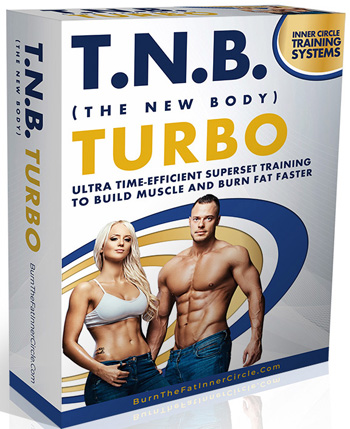

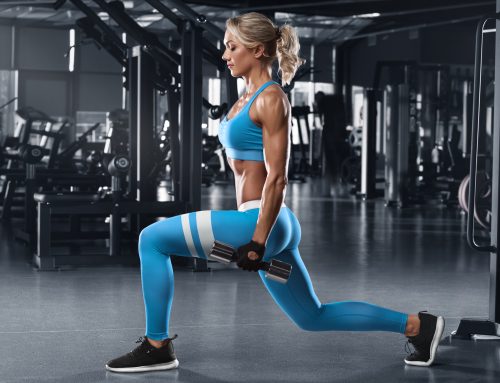
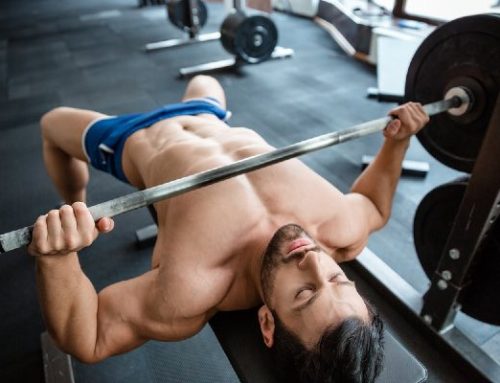

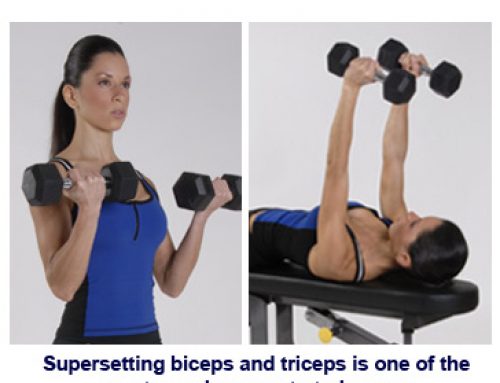
Leave A Comment